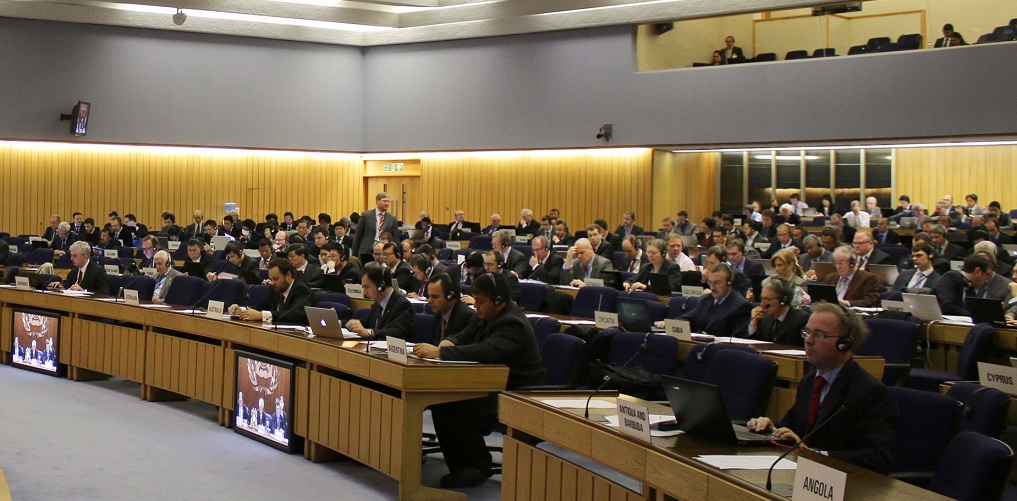IMO: NECA in Northern Europe and a global 0.5% sulphur limit
Last week, the International Maritime Organization (IMO) made the decision to implement a global Sulphur cap of 0,5% m/m (mass/mass) for ship fuel in 2020. The resolution, which greatly impacts both the environment and human health, has been made during the 70th meeting of the Marine Environment Protection Committee (MEPC) in London. A proposal for the establishment of a Baltic and North Sea NECAs has also passed.
 Under the new global cap, ships will have to use fuel oil on board with a Sulphur content of no more than 0.5% m/m, against the current limit of 3,5%, which has been in effect since 1 January 2012. The interpretation of “fuel oil used on board” includes use in main auxiliary engines and boilers. Exemptions are provided for situations involving the safety of the ship or saving life at sea, or if a ship or its equipment is damaged.
Under the new global cap, ships will have to use fuel oil on board with a Sulphur content of no more than 0.5% m/m, against the current limit of 3,5%, which has been in effect since 1 January 2012. The interpretation of “fuel oil used on board” includes use in main auxiliary engines and boilers. Exemptions are provided for situations involving the safety of the ship or saving life at sea, or if a ship or its equipment is damaged.
While certainly groundbreaking on a global scale, the 0,5% cap has already been in effect in the Baltic and North Sea region since 2015. The Baltic region can be considered a pioneer in matters related to compliance methods employed in order to meet these requirements. Compliance methods include usage of low-sulphur fuels or alternative fuels such as LNG, as well as installation of exhaust gas cleaning systems (also known as “scrubbers”).
The Baltic region has shown remarkable ingenuity and determination when first confronted with the SOx emission requirements, assuring that the implementation of the new rules was a smooth process. Meeting such regulations is a very complex and costly operation and sufficient preparation time, as well as support from the side of the policymakers are paramount to the overall success.
The 70th MEPC also saw the passing of a proposal of the HELCOM countries to limit the NOx emission from ships in the Baltic Sea. A similar proposal from the North Sea countries also passed. The decision will be confirmed at the next MEPC meeting in spring 2017, resulting in the creation of a larger Nitrogen Emission Control Area (NECA) for new ships built in or after 2021.
According to fresh estimates by European Monitoring and Evaluation Programme (EMEP), the annual reduction in total Nitrogen deposition to the Baltic Sea area will be 22,000 tons as a combined effect of the Baltic and North Seas NECAs and compared to a non-NECA scenario. However, the issue of resulting costs needs to be stressed, as the requirements will be accompanied by a lengthy period of fleet renewal.
Bogdan Oldakowski, BPO Secretary General, commenting IMO’s decisions, said: BPO welcomes the decision regarding the global 0.5 sulphur cap. The introduction of a 0.1 sulphur limit in the European SECA in 2015 resulted in positive environmental consequences when it comes to emissions from shipping. We foresee a similar positive impact after 2020 on a global scale. We expect innovative development in shipping, especially related to alternative fuel technology, including LNG.
Moreover, BPO welcomes the decision to introduce the Baltic and North Sea NECAs with NOx Tier III requirements for vessels built from 1-1-2021 onwards.
At the same time BPO remains convinced that equal rules for shipping should apply to all seas in Europe, if not globally to avoid disruption of competition.
An overview of the environmental regulations in the Baltic Sea and the compliance methods employed by the ports and shipowners in the region, can be found in the recently published BPO report “The Baltic Sea as a model region for green ports and maritime transport”.
The publication can be downloaded directly, free of charge, from the BPO website.
![Baltic Ports Organization]](/assets/template/img/bpo/logo.png)